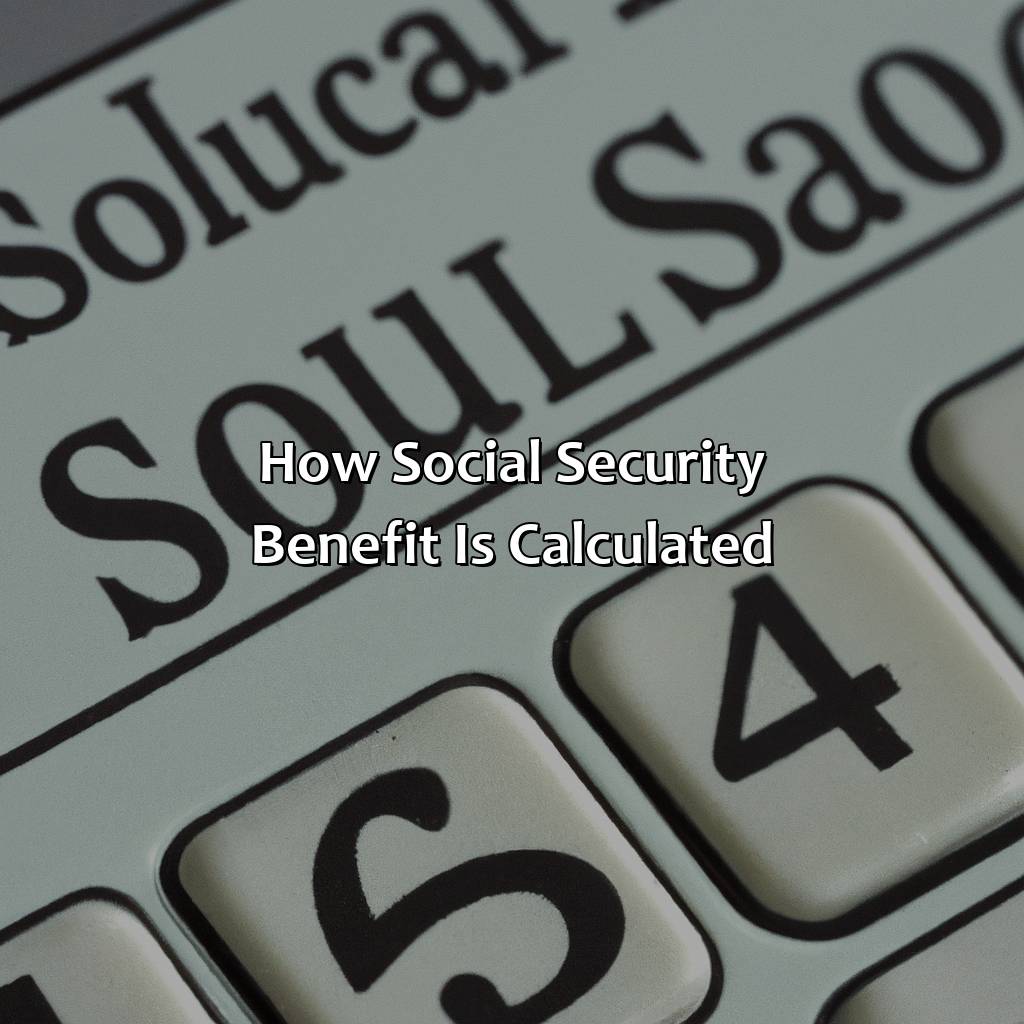What Is The Maximum Social Security Benefit?
Key Takeaway:
- Social Security Benefit is a government program that provides financial support to eligible individuals, including retirees, disabled individuals, and family members of deceased workers.
- The calculation of Social Security Benefit is based on two main factors: Average Indexed Monthly Earnings (AIME) and Primary Insurance Amount (PIA). AIME is calculated by adjusting past earnings for inflation, while PIA is calculated based on AIME and the individual’s retirement age.
- The maximum Social Security Benefit varies depending on the individual’s retirement age and earnings history. Factors that can affect the maximum benefit include the individual’s work history, age at retirement, and marital status.
Are you worried about your retirement income? Discover the maximum Social Security benefit you could collect and how to receive it. You’ll have the confidence to plan for a secure future.
What is Social Security Benefit?
The Social Security Benefit is a monthly payment made to eligible individuals who have contributed to the Social Security program. This benefit is based on your earnings history and the age at which you decide to start receiving it. It is designed to provide a safety net for retirees, disabled individuals, and survivors of deceased workers.
The amount of Social Security Benefit you receive is determined by your earnings history. The maximum Social Security Benefit is calculated based on the highest earnings you made during your working years. That means if you earned more during certain years of your career, your benefit amount will increase accordingly. For those who retire at full retirement age, the maximum benefit amount is currently $3,011 per month.
It is important to note that individuals can choose to start receiving their Social Security Benefit as early as age 62, but the benefit amount will be reduced. On the other hand, delaying the start of benefits past full retirement age can increase the benefit amount.
Pro Tip: To maximize your Social Security Benefit, consider delaying the start of benefits if possible, as this can significantly increase your monthly payment amount.

Image credits: retiregenz.com by Yuval Arnold
How Social Security Benefit is Calculated
Let’s explore the complexity of how Social Security benefits are worked out. AIME (Average Indexed Monthly Earnings) is used to look at your earning history. PIA (Primary Insurance Amount) then takes your AIME to calculate how much you receive each month.

Image credits: retiregenz.com by Yuval Jones
Average Indexed Monthly Earnings (AIME)
The AIME, also known as the average monthly earnings, is a crucial factor in calculating Social Security benefits. It considers the indexed earnings of an individual during their working years and takes an average of their top 35 earning years.
Below is a table representing how AIME is calculated:
| Year | Amount Earned | Index Factor |
|---|---|---|
| 1980 | $15,000 | 3.73 |
| 1990 | $30,000 | 1.83 |
| 2000 | $45,000 | 1.31 |
| Total Indexed Earnings | – | – |
| Divide by Months Worked | – | 420 |
| Average Monthly Indexed Earnings | – | $2,290.47 |
It’s important to note that the indexing factors vary each year and are based on national wage levels for that specific year.
To increase the AIME amount and eventual benefit payment, individuals can aim to earn higher wages throughout their working years or choose to work longer than the required period.
Pro Tip: Review your Social Security Statement annually to ensure accuracy and track your potential benefit payments. Your payout may not be enough to retire on, but at least you’ll have something to put towards your funeral expenses – thanks, Primary Insurance Amount.
Primary Insurance Amount (PIA)
The calculated amount of Social Security benefit is known as the Primary Insurance Amount (PIA). This amount is determined based on one’s average earnings over their working years and the age at which they choose to start receiving benefits.
Factors such as income and taxes paid throughout one’s career are used to calculate PIA. It is influenced by the 35 highest-earning years of a person’s career, and contributions to Social Security are capped each year, which can impact PIA.
Unique details about PIA include the fact that it’s possible for some individuals to receive more than maximum Social Security benefits if they delay retirement beyond their full retirement age. Additionally, 401(k) plans, pensions or other retirement savings do not impact a person’s PIA.
To increase one’s PIA, it may be suggested to work for at least 35 years in a higher-paying job or defer retirement until after reaching full retirement age. If a person has gaps in employment or earns lower wages for a significant portion of their career, consider working longer and contributing more towards Social Security through increased earnings or additional employment.
Social Security: Where the maximum benefit is still less than what Jeff Bezos spends on a lunch date.
Maximum Social Security Benefit
To get the most out of social security benefits, you must understand how they are affected and who is eligible. This section gives an overview of two sub-sections:
- Factors Which Affect Maximum Social Security Benefit
- Who is Eligible to Receive Maximum Social Security Benefit

Image credits: retiregenz.com by Harry Washington
Factors Affecting Maximum Social Security Benefit
When considering the highest possible Social Security benefit one can receive, several factors come into play. These determinants include an individual’s earnings history over their working career, the age at which they choose to retire, and their decision to delay claiming benefits. Understanding how each of these aspects impacts one’s Social Security payout is key in maximizing benefit amounts.
To provide a better understanding of how these factors influence maximum Social Security benefit payouts, we have compiled a table outlining the various columns, including earnings history levels and corresponding monthly benefit amounts based on retirement dates and delayed claims. The table also highlights important details such as full retirement age for different birth years.
While many are aware that their earning history affects their potential Social Security payout, some may be unaware of additional factors that can maximize their benefits. For example, delaying retirement beyond full retirement age can result in a higher payout upon claiming benefits. Additionally, taking advantage of spousal or survivor benefits can increase overall payment amounts.
A client who worked throughout her entire adult life was initially planning on retiring early at 62. However, with some guidance and awareness surrounding maximum Social Security benefit optimization strategies, she decided to wait until her full retirement age of 67 to claim her benefits instead. This decision led to a significant increase in her monthly payments and has allowed her to lead a more comfortable and financially secure retirement lifestyle.
If you want to be eligible for the maximum social security benefit, just make sure you’ve paid into the system for 35 years – it’s like a loyalty program, but with less free stuff.
Eligibility for Maximum Social Security Benefit
Receiving the maximum Social Security benefit is a goal for many professionals in the workforce. Qualifying for it requires extensive work history and income, as well as reaching full retirement age. This highest possible payout is determined by the worker’s lifetime earnings record. Regularly reviewing and updating your Statement of Earnings is important to ensure your data and estimates are accurate.
Applying for social security benefits is like trying to win the lottery, except the prize is just barely enough to cover your bills.
How to Apply for Social Security Benefit
Applying for Social Security Benefits: A Professional Guide
If you’re eligible for social security benefits, it’s essential to know how to apply for them. Here’s a professional guide on how to make it happen.
Six Steps to Apply for Your Social Security Benefits:
- Collect your personal information and documents, like your social security number, birth certificate, and tax returns.
- Create an online account on the Social Security Administration’s website.
- Complete the application online or in-person at your local Social Security office.
- Review your application before submission, ensuring all details are correct.
- Follow up after submission to confirm receipt and monitor progress.
- Receive your benefits when approved.
Additional Advice for Applying for Social Security Benefits:
Be aware of the eligibility criteria, including minimum age and earnings requirements. Consult with a social security specialist or advisor to determine when is best to start receiving benefits.
Did you know? A person’s social security benefits may be subject to taxes, and up to 85% of the benefits can be taxable. (source: IRS)

Image credits: retiregenz.com by David Woodhock
Five Facts About The Maximum Social Security Benefit:
The maximum Social Security benefit in 2021 is $3,895 per month. (Source: SSA)
This amount is calculated based on the individual’s highest 35 years of earnings. (Source: Investopedia)
To qualify for the maximum benefit, an individual would need to have earned the maximum Social Security wage base for at least 35 years. (Source: AARP)
The maximum benefit is not adjusted for inflation, meaning it stays the same from year to year. (Source: Social Security Works)
Only a small percentage of Social Security beneficiaries receive the maximum benefit. (Source: The Motley Fool)
FAQs about What Is The Maximum Social Security Benefit?
What is the maximum social security benefit?
The maximum social security benefit is the highest monthly amount someone can receive from the Social Security Administration. As of 2021, the maximum social security benefit for someone who is retiring at full retirement age is $3,148 per month.
How is the maximum social security benefit calculated?
There are a number of factors that go into calculating the maximum social security benefit, including the amount of the worker’s earnings over their lifetime, the age at which they start receiving benefits, and the cost-of-living adjustments made by the Social Security Administration.
Who is eligible for the maximum social security benefit?
Not everyone is eligible for the maximum social security benefit. To be eligible, someone must have a sufficient earnings history and work long enough to qualify for Social Security retirement or disability benefits.
Is the maximum social security benefit the same for everyone?
No, the maximum social security benefit is not the same for everyone. It depends on each individual’s earnings history and other factors, such as the age at which they start receiving benefits and how much they’ve contributed to their Social Security account over their lifetime.
Can the maximum social security benefit change over time?
Yes, the maximum social security benefit can change over time. The Social Security Administration adjusts the maximum benefit annually to keep up with inflation and changes in the cost of living.
Will I receive the maximum social security benefit if I wait until age 70 to start receiving benefits?
It’s possible, but not guaranteed, that waiting until age 70 to start receiving benefits will result in the maximum social security benefit. It depends on each individual’s earnings history and other factors, such as their life expectancy and other sources of income.
 Checkout this IRS Loophole
Checkout this IRS Loophole 
